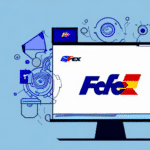Understanding Product Bundling: Meaning, Benefits, and Strategies
Product bundling is a strategic marketing approach where businesses offer multiple related products or services as a single package deal. By combining two or more items, such as a camera and a memory card or a phone and a phone case, companies can provide customers with a more enticing and convenient purchasing option. This strategy not only enhances the perceived value for customers but also drives higher sales and revenue for businesses.
The Benefits of Product Bundling
Product bundling offers numerous advantages that can significantly impact a business's performance:
- Increased Sales and Revenue: Bundling encourages customers to purchase more items than they might individually, leading to higher average order values. According to a study by Business Insider, effective bundling strategies can boost sales by up to 30%.
- Customer Perceived Value: Bundles often appear as better deals compared to purchasing items separately, enhancing the overall value proposition.
- Inventory Management: Bundling helps move slower-moving or less popular products by pairing them with best-sellers, reducing the need for deep discounts or inventory write-offs.
- Competitive Differentiation: Unique and tailored bundles can set a business apart in a saturated market, attracting customers seeking value-added offers.
Types of Product Bundling Strategies
Businesses can implement various bundling strategies to align with their marketing objectives:
- Complementary Bundling: Combines related products that naturally go together, such as a laptop and a printer.
- Standalone Bundling: Packages unrelated products or services, like a phone and a phone case.
- Pure Bundling: Offers products exclusively as a bundle, not allowing individual purchases. An example is software suites that combine multiple programs into one package.
- Mixed Bundling: Provides a combination of complementary and standalone products within a single bundle, allowing customers to choose between different bundle options.
The Psychology Behind Product Bundling
Product bundling leverages several psychological principles to influence customer behavior:
- Perceived Value: Bundles enhance the perceived value, making customers feel they are getting more for their money.
- Simplicity in Decision-Making: Bundles reduce the cognitive load by limiting the number of choices customers need to make.
- Loss Aversion: Customers are motivated to purchase bundles to avoid missing out on perceived deals or discounts.
Additionally, the anchoring effect plays a role, where the initial price point serves as a reference, making the bundled price appear more attractive.
Implementing a Successful Product Bundling Strategy
Best Practices
- Understand Customer Needs: Tailor bundles to align with the preferences and requirements of your target audience.
- Diverse Bundle Options: Offer multiple bundle options at varying price points to cater to different budgets and preferences.
- Clear Communication: Transparently convey the benefits and value of the bundle to customers.
- Ensure Profitability: Carefully price bundles to remain profitable while providing value.
Common Mistakes to Avoid
- Overcomplicating Bundles: Avoid creating overly complex bundles that confuse customers.
- Poor Pricing Strategies: Ensure bundles are neither too expensive nor too cheap, maintaining a balance between attractiveness and profitability.
- Too Many Options: Limit the number of bundle options to prevent customer decision fatigue.
Real-World Examples of Successful Product Bundles
- Apple's Ecosystem: Bundling devices like the iPhone with the Apple Watch and AirPods creates a cohesive user experience that encourages customers to stay within the Apple ecosystem.
- McDonald's Happy Meals: Combining a burger, fries, and a toy appeals to both children and parents, simplifying the purchasing process and increasing overall sales.
- Netflix Subscription Plans: Offering different subscription tiers with varying features allows Netflix to cater to diverse customer preferences and budgets.
- Amazon Prime: This membership bundles benefits like free two-day shipping, streaming access to movies and TV shows, and exclusive discounts, providing extensive value to members.
Tools and Platforms for Managing Product Bundles
Several platforms facilitate the creation and management of product bundling campaigns:
These platforms offer features such as customizable bundle configurations, seamless integration with e-commerce systems, and robust analytics tools to track performance and optimize future campaigns.
Measuring the Success of Your Product Bundling Strategy
To evaluate the effectiveness of your bundling campaigns, consider the following key metrics:
- Sales Volume: Monitor the number of units sold through bundled offers.
- Revenue Generated: Track the total income derived from bundled sales.
- Customer Feedback: Gather insights and satisfaction levels through reviews and surveys.
- Customer Retention Rate: Assess how well bundles contribute to retaining customers for future purchases.
Maximizing Profit with Cross-Selling and Upselling Through Bundles
Integrating cross-selling and upselling techniques within product bundles can significantly enhance profitability. Cross-selling suggests related products to customers based on their current purchases, while upselling encourages customers to opt for a higher-end version of a product. By embedding these strategies in bundles, businesses can increase average order values and provide enhanced value to customers.
Conclusion
Product bundling remains a powerful strategy for businesses aiming to increase revenue, improve customer satisfaction, and distinguish themselves in competitive markets. By understanding customer needs, selecting the right bundling strategies, and utilizing the appropriate tools, businesses can create compelling bundle offers that drive sales growth and foster long-term customer loyalty. Continuous monitoring and optimization of bundle performance ensure sustained success and profitability in dynamic market environments.




















